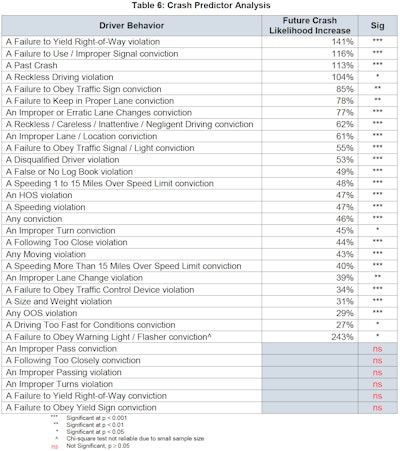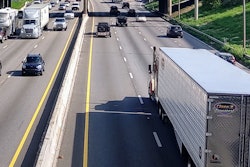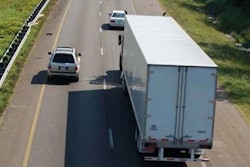A violation for the failure to yield right-of-way, conviction for failure to use or improper use of a turn signal, and prior involvement in a crash are the top factors shared by drivers who later go on to be involved in future crashes, according to new research from the American Transportation Research Institute.
Using statistical tests to determine whether there is a significant probability of future crashes for truck drivers based on past violations, convictions and/or crash data, ATRI last week released the fourth iteration of its Predicting Truck Crash Involvement research.
Prior iterations of the study were released in 2005, 2011 and 2018. ATRI based its 2022 analysis on 583,805 unique U.S.-based truck drivers’ data obtained from the Federal Motor Carrier Safety Administration’s Motor Carrier Management Information System (MCMIS) and the Commercial Driver’s License Information System (CDLIS). Data utilized for the analysis from MCMIS included driver, vehicle and moving violations, likewise crash-involvement data. Driver traffic conviction information was available through CDLIS. The 2022 report examined MCMIS and CDLIS data from 2017-2018.
“We can link these different truck driver behaviors to future crash probability, and the power of this is we can really start to focus on what really does matter in terms of safety,” said Dan Murray, senior vice president of ATRI. “There’s hundreds and hundreds of Federal Motor Carrier Safety Regs on the books, and the vast majority of them do not have any statistical relationship to reducing crashes.”

 Based on past crash data, ATRI has these violation and conviction categories are most statistically correlated with a driver's future involvement in a crash.ATRI
Based on past crash data, ATRI has these violation and conviction categories are most statistically correlated with a driver's future involvement in a crash.ATRI
Each of the top three indicators for future crash involvement correlates to an increase of more than 100% in a driver’s future crash likelihood, ATRI found. Those measures of crash likelihood in each case were up from the similar 2018 analysis.
- A violation for failure to yield right-of-way was 39.6% higher in 2022
- Conviction for failure to use / improper signal: up 41.5%
- Past crash involved: up 28.4%
“When we see these behaviors and discover that in the historical crash database they’re closely tied, that’s how we then sort of extrapolate to the future and say, ‘Well, based on the historical data, expect a 141% increased likelihood of a crash if you’re not willing to yield the right-of-way to an oncoming vehicle,'” Murray said.
Nine other violation categories had a statistically significant relationship with future crashes, with increased crash likelihoods between 31% and 53%. Twelve other conviction categories showed the same relationship, with the majority above 50% increased likelihood of a future crash.
ATRI also found that drivers with any out-of-service violation were 29% more likely than their peers to be involved in a future crash, and drivers with a moving violation were 43% more likely to be involved in a future crash. Additionally, any conviction increased future crash likelihood by 46%.
In all four iterations of the research, an improper or erratic lane-change conviction and involvement in a past crash have been among the top 10 observed behaviors correlated with future crash involvement. Several other observed behaviors -- a reckless driving violation, turn-signal-related convictions, right-of-way violations, lane-keeping convictions, reckless/careless/inattentive/negligent driving convictions -- have appeared in the top 10 categories in three of the four studies.
In the 2022 research, hours of service and other logbook-related violations were just outside of the top 10 categories, with false or no log book violations being the 12th-highest on the list and other HOS violations at No. 14. Murray noted that HOS regs analyzed included state and local hours of service, no log/log not current, weekly drive-time limits, daily drive-time and on-duty limits and all other HOS behaviors, which includes about 35 behaviors, he said.
New to the 2022 iteration of the research was an analysis of whether safety for drivers aged 18-20 differed from drivers 25 and older. Drivers aged 21-24 were excluded to create a significant barrier between the two age categories.
The study found that, though the sample size of under-21 intrastate-only drivers was very small compared to those older than 24 (1,723 under 21 compared to 475,052 older than 24), only 2.4% of under-21 drivers had been involved in a crash compared to 6.9% of those over 24. Like other data in the report, these crash numbers are from 2017-2018. The ATRI report notes, however, that with such a small sample size of under-21 intrastate drivers, the numbers should be interpreted with caution.
“When we ran the data, we discovered that 18-20-year-olds, on sort of a per capita basis, have fewer crashes than those drivers who are 25 or older,” Murray said, adding that more research is needed on young driver safety as more data on under-21 drivers is made available throughout FMCSA's under-21 Safe Driver Apprenticeship Pilot Program.










